Anorexia em répteis - Causas, prevenção e soluções
Introdução
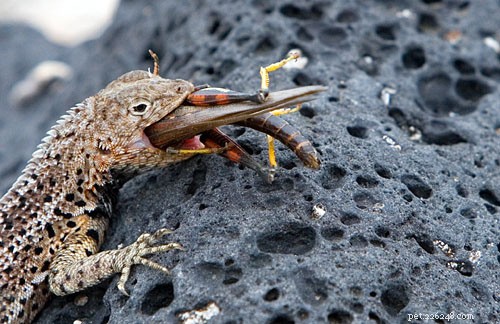 A anorexia é um problema muito comum e frustrante encontrado na criação de répteis. A anorexia é um sintoma, não uma doença. Seu tratamento, portanto, depende da determinação e correção da causa ou causas subjacentes. A anorexia pode ser desencadeada por uma série de problemas e pode ser difícil restringir o problema, no entanto, 9 em cada 10 vezes a causa está relacionada à criação e, uma vez identificada, pode ser resolvida facilmente. Isso não quer dizer que se você tem um réptil que passa por um período de anorexia você está fazendo algo intrinsecamente errado! Os animais são tão individuais quanto os humanos e embora você possa manter seu animal de estimação em um ambiente considerado melhor para sua espécie, seu animal individual pode exigir necessidades ligeiramente diferentes - como mais esconderijos ou rotinas de alimentação diferentes.
A anorexia é um problema muito comum e frustrante encontrado na criação de répteis. A anorexia é um sintoma, não uma doença. Seu tratamento, portanto, depende da determinação e correção da causa ou causas subjacentes. A anorexia pode ser desencadeada por uma série de problemas e pode ser difícil restringir o problema, no entanto, 9 em cada 10 vezes a causa está relacionada à criação e, uma vez identificada, pode ser resolvida facilmente. Isso não quer dizer que se você tem um réptil que passa por um período de anorexia você está fazendo algo intrinsecamente errado! Os animais são tão individuais quanto os humanos e embora você possa manter seu animal de estimação em um ambiente considerado melhor para sua espécie, seu animal individual pode exigir necessidades ligeiramente diferentes - como mais esconderijos ou rotinas de alimentação diferentes. A anorexia pode ser dividida em duas classificações separadas:
-
Anorexia que ocorre em um animal que nunca se alimentou com sucesso
-
Anorexia em um animal que anteriormente se alimentava bem
Anorexia em um animal que se alimentou anteriormente
A anorexia em um animal que estava se alimentando anteriormente pode ser incrivelmente frustrante. Provavelmente é mais comum em novas aquisições, mas também pode ocorrer em animais que parecem ter se estabelecido por um longo período de tempo.
Pode ser muito tentador cair na suposição (incorreta) de que um animal que se alimentava de repente se tornando anoréxico significa que deve ter havido uma mudança nas circunstâncias para que isso acontecesse. É verdade que na maioria das vezes esse é o caso, no entanto, os répteis por sua natureza são extremamente resistentes e podem tolerar certos estresses por longos períodos de tempo antes de atingirem um “ponto de ruptura”. Isso pode ser visto em tartarugas. Hoje, todas as evidências apontam para tartarugas mantidas no Reino Unido precisando de uma casa primária dentro de um viveiro aquecido. Mas por muitos anos as tartarugas foram (e ainda são) mantidas em jardins no Reino Unido. Eles sobreviverão por muitos anos nessas condições – alguns podem até atingir o triplo, mas a maioria não; e aqueles que o fazem, tendem a sobreviver em vez de prosperar.
Principais problemas:
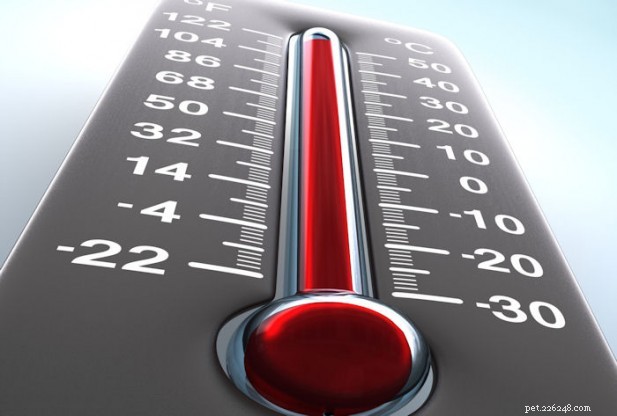
- Problemas relacionados à temperatura – geralmente causados pela queda/aumento da temperatura em viveiros não controlados termostaticamente conforme as estações mudam
- Insegurança no ambiente – devido à falta de couro
- Manuseio excessivo
- Excesso de alimentação
Anorexia em um réptil que não se alimenta
Normalmente, esse tipo de anorexia é encontrado em animais capturados na natureza, mas também pode ocorrer em novos filhotes/recém-nascidos que foram criados por você. Em ambos os casos, é muito importante resolver o problema o mais rápido possível, pois esses animais são tipicamente mais vulneráveis e podem não ser capazes de resistir a longos períodos de anorexia, bem como um animal previamente alimentado e saudável.
Principais problemas:
- Temperaturas incorretas
- Estresse devido à insegurança no ambiente – normalmente devido à falta de esconderijos
- Parasitas (capturados na natureza)
Recomendações gerais
Em um animal que é perfeitamente saudável e está se alimentando antes desse episódio de anorexia, você não deve se preocupar imediatamente. Existem várias razões para a anorexia que não representam risco direto para o seu animal, como anorexia sazonal (reprodução) ou simplesmente não precisar de comida. Os répteis são animais extremamente eficientes e podem passar surpreendentemente longos períodos sem comida – supondo que sejam perfeitamente saudáveis e possam voltar a comer por conta própria. A hora de se preocupar com a anorexia de um animal é se ele começar a perder a condição corporal ou ficar letárgico, ou desenvolver outros sintomas de doença.
Se o seu animal desenvolver anorexia, certamente vale a pena certificar-se de que o ambiente do seu animal está correto e verificar as possíveis causas abaixo e resolver quaisquer problemas que você possa encontrar.
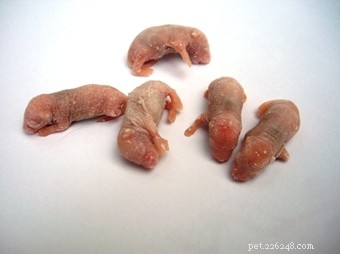 Vale a pena seguir algumas práticas sensatas para manter os níveis de estresse em um animal anoréxico ao mínimo. Enquanto o animal não estiver se alimentando, pare de manusear tudo junto – mesmo que o animal seja bem manuseado e pareça tolerá-lo muito bem. Tente reduzir ao mínimo qualquer movimento desnecessário dentro e ao redor do tanque e tente resistir à vontade de verificar seu animal com muita regularidade - especialmente se for novo ou selvagem.
Vale a pena seguir algumas práticas sensatas para manter os níveis de estresse em um animal anoréxico ao mínimo. Enquanto o animal não estiver se alimentando, pare de manusear tudo junto – mesmo que o animal seja bem manuseado e pareça tolerá-lo muito bem. Tente reduzir ao mínimo qualquer movimento desnecessário dentro e ao redor do tanque e tente resistir à vontade de verificar seu animal com muita regularidade - especialmente se for novo ou selvagem. Ao tentar alimentar, muitas vezes vale a pena reduzir um pouco o tamanho da comida oferecida, principalmente se o seu animal passou um longo período sem comer ou regurgitou.
Se o seu animal desenvolver anorexia e apresentar outros sinais de doença (tremores, excesso de saliva, compactação etc.), ou começar a perder peso rapidamente, a correção do ambiente pode não ser suficiente e deve-se procurar aconselhamento veterinário.
Causas da anorexia
Temperaturas incorretas
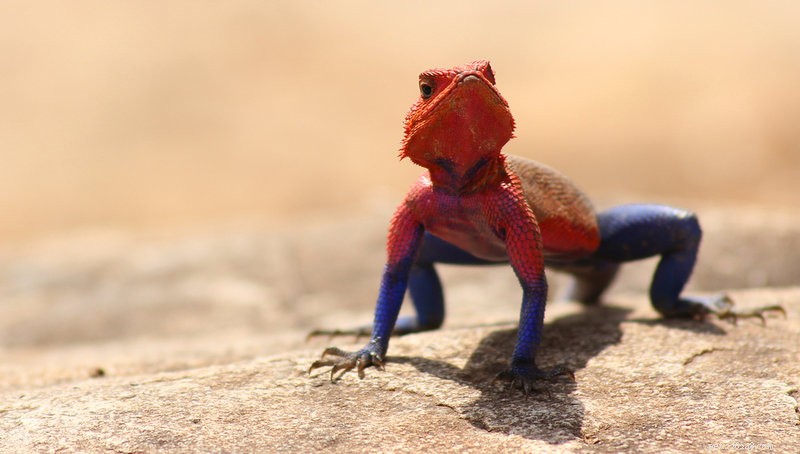 De nossa experiência, problemas com temperatura são de longe a causa mais comum de anorexia. Temperaturas incorretas – sejam muito altas ou muito baixas – podem fazer com que o apetite dos répteis diminua por vários motivos.
De nossa experiência, problemas com temperatura são de longe a causa mais comum de anorexia. Temperaturas incorretas – sejam muito altas ou muito baixas – podem fazer com que o apetite dos répteis diminua por vários motivos. Um recinto muito quente e sem áreas para o animal escapar do calor e esfriar muitas vezes resultará em anorexia, bem como em uma série de outros problemas. Um animal submetido a superaquecimento geralmente fica incrivelmente estressado, às vezes agressivo, e a alimentação se tornará uma prioridade menor do que escapar do calor.
Quando o recinto está muito frio, o apetite dos répteis é suprimido. Sendo de sangue frio, os répteis retiram calor do ambiente para aquecer seus corpos e precisam atingir temperaturas corporais específicas para funcionar adequadamente. Enzimas e bactérias digestivas no trato digestivo dos répteis não funcionarão efetivamente quando o corpo do animal não estiver em uma temperatura ideal. Portanto, mesmo que o alimento seja consumido, ele não será digerido de forma eficaz. Isso pode causar diversos problemas como compactação, doenças gastrointestinais e o animal não absorverá os nutrientes de forma tão eficaz de sua alimentação. Muitas vezes, os répteis submetidos a temperaturas abaixo do ideal reduzem o apetite para que não “sobrecarreguem” seus sistemas digestivos ou parem de comer todos juntos.
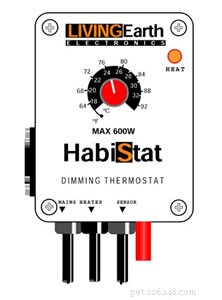 Os répteis precisam ser capazes de “termorregular” (manter uma temperatura corporal estável), e para isso é necessário vital que seu gabinete forneça um gradiente térmico, ou seja, uma extremidade quente e fria. Conseguir isso é simples; todas as fontes de calor devem ser colocadas em uma extremidade do tanque, deixando a outra extremidade livre de fontes de calor para produzir uma extremidade fria. Diferentes espécies têm diferentes requisitos de temperatura, portanto, certifique-se de saber qual é a temperatura ideal do seu animal. Medimos a temperatura ambiente no meio do recinto para determinar as temperaturas mais eficazes para diferentes espécies. As temperaturas encontradas nas extremidades quente e fria são normalmente irrelevantes, desde que a temperatura ambiente esteja correta. (Este pode não ser o caso de certas espécies que requerem temperaturas de aquecimento muito altas, como Uromastyx espécies e monitores anões de cauda espinhosa etc.).
Os répteis precisam ser capazes de “termorregular” (manter uma temperatura corporal estável), e para isso é necessário vital que seu gabinete forneça um gradiente térmico, ou seja, uma extremidade quente e fria. Conseguir isso é simples; todas as fontes de calor devem ser colocadas em uma extremidade do tanque, deixando a outra extremidade livre de fontes de calor para produzir uma extremidade fria. Diferentes espécies têm diferentes requisitos de temperatura, portanto, certifique-se de saber qual é a temperatura ideal do seu animal. Medimos a temperatura ambiente no meio do recinto para determinar as temperaturas mais eficazes para diferentes espécies. As temperaturas encontradas nas extremidades quente e fria são normalmente irrelevantes, desde que a temperatura ambiente esteja correta. (Este pode não ser o caso de certas espécies que requerem temperaturas de aquecimento muito altas, como Uromastyx espécies e monitores anões de cauda espinhosa etc.). A maneira mais confiável de atingir a temperatura ideal para o seu animal é através do uso de um termostato. Um termostato simplesmente se conecta entre sua fonte de calor e a fonte de alimentação principal e regula a energia enviada para a fonte de calor com base na temperatura no tanque – medida pela sonda de temperatura. Vários tipos de termostatos estão disponíveis e alguns dos termostatos mais avançados podem definir configurações de temperatura dia/noite e controlar a iluminação UVB em um ciclo liga/desliga dia/noite.
Teperaturas Ambiente Sugeridas de Espécies Comuns:
- Dragão Barbudo – 84F
- Lagarta-leopardo – 82-84F
- Dragão de Água – 84F
- Cobra do milho – 82-84F
- Hognose Snake – 84F
- Tartarugas de Hermann e Horsfield – 82F
- Tartaruga Leopardo – 84F
- Lagartixa com crista - 78F
- Rã arborícola verde/cinza dos EUA - 76F
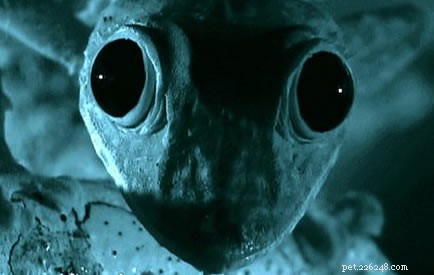 Quedas noturnas de temperatura são uma sugestão comum encontrada online em sites e fóruns entre outros lugares. Descobrimos que apenas algumas espécies selecionadas parecem se beneficiar das quedas noturnas e, na maioria dos casos, as quedas noturnas na temperatura geralmente causam mais problemas (incluindo anorexia) do que benefícios. Mas se você está determinado a fornecer uma queda noturna para o seu animal, outros aspectos da criação do animal também devem ser adaptados para levar em conta essas quedas de temperatura – uma das quais é a rotina de alimentação. Para obter conselhos sobre como adaptar melhor a criação do seu animal para compensar uma queda noturna ou para descobrir se sua espécie se beneficia, ligue para nós.
Quedas noturnas de temperatura são uma sugestão comum encontrada online em sites e fóruns entre outros lugares. Descobrimos que apenas algumas espécies selecionadas parecem se beneficiar das quedas noturnas e, na maioria dos casos, as quedas noturnas na temperatura geralmente causam mais problemas (incluindo anorexia) do que benefícios. Mas se você está determinado a fornecer uma queda noturna para o seu animal, outros aspectos da criação do animal também devem ser adaptados para levar em conta essas quedas de temperatura – uma das quais é a rotina de alimentação. Para obter conselhos sobre como adaptar melhor a criação do seu animal para compensar uma queda noturna ou para descobrir se sua espécie se beneficia, ligue para nós. Segurança do gabinete
Provavelmente a segunda causa mais comum de anorexia é devido à ansiedade, causada pela insegurança do animal em seu ambiente. Se um animal não se sente seguro em seu ambiente, ele simplesmente não estará interessado em se alimentar. Animais capturados recentemente na natureza são mais suscetíveis a este problema, e é por isso que não vendemos nenhum animal selvagem capturado que ainda não esteja em forma, saudável, se alimentando e bem estabelecido. Algumas espécies tendem a sofrer mais, com uma condição chamada “síndrome de má adaptação”, em que os indivíduos simplesmente não se ajustam bem ao cativeiro. Por isso mesmo temos cuidado com as espécies que importamos e só importamos aquelas que em nossa experiência se adaptam bem.
Animais em cativeiro de longo prazo, bem como animais criados em cativeiro também podem se sentir inseguros em seu ambiente e, portanto, correm o risco de se tornarem anoréxicos. É mais provável que isso ocorra após uma mudança para um novo ambiente, como ao trazer um novo animal para casa, mas também pode ocorrer se a posição de um recinto na casa mudar.
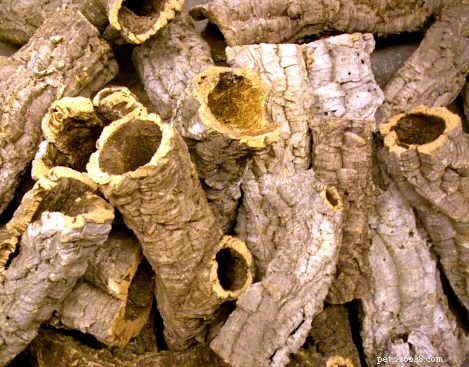
Para ajudar um animal a se sentir seguro em seu ambiente é importante fornecer muitos esconderijos. Quando se trata de esconderijos, Menos é… simplesmente Menos . Pode parecer uma lógica inversa, mas colocar um excesso de esconderijos no ambiente do seu animal provavelmente fará com que você veja mais do seu animal se comportando naturalmente. Se você colocar apenas um único esconderijo para o seu animal, pode apostar que ele passará a maior parte da vida sob ele, com muito medo de se aventurar.
Tão importante quanto a quantidade de esconderijos é também a forma e o tamanho deles. Colocar um esconderijo grande demais para o seu animal trará pouco ou nenhum benefício para ele. Em particular, as pítons reais adoram esconderijos nos quais elas podem apenas se espremer. No que diz respeito a eles, se eles puderem caber no espaço, nenhum predador poderá alcançá-los e eles se sentirão mais seguros.
Se você tem um animal que parou de se alimentar, sempre vale a pena colocar alguns esconderijos extras em seu recinto ou adicionar folhagens e decoração do tanque para quebrar grandes espaços abertos.
Fonte de alimentos/rotina de alimentação
A anorexia pode ser provocada oferecendo um tipo de alimento que seu animal não gosta de comer. Em cobras, isso pode estar relacionado ao tamanho. As cobras às vezes se recusam a comer um camundongo/rato que é muito pequeno para elas e muitas vezes recusam alimentos muito grandes. Ocasionalmente, uma cobra pode começar a se recusar a comer um determinado tipo de alimento, seja camundongo ou rato. Mudar temporariamente, de um rato para um rato de tamanho equivalente, ou vice-versa, pode encorajar uma cobra a comer e reiniciar seu sistema digestivo novamente, o que significa que ela está mais interessada em se alimentar no futuro e você deve poder voltar para o fonte de alimento original após algumas alimentações bem sucedidas.
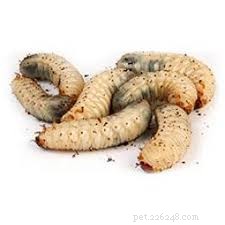 De maneira semelhante às cobras, os lagartos podem ocasionalmente ficar “entediados” de uma fonte de alimento se forem alimentados apenas um tipo. A variedade é importante, mas deve ser fornecida usando uma fonte de alimento diferente em rações separadas e não alimentando seu animal com uma carga de insetos diferentes ao mesmo tempo. Ao usar larvas de farinha ou de cera em um prato, às vezes a visibilidade pode ser um problema e pode ajudar a inserir a tigela no substrato para ajudar o animal a ver e chegar aos insetos.
De maneira semelhante às cobras, os lagartos podem ocasionalmente ficar “entediados” de uma fonte de alimento se forem alimentados apenas um tipo. A variedade é importante, mas deve ser fornecida usando uma fonte de alimento diferente em rações separadas e não alimentando seu animal com uma carga de insetos diferentes ao mesmo tempo. Ao usar larvas de farinha ou de cera em um prato, às vezes a visibilidade pode ser um problema e pode ajudar a inserir a tigela no substrato para ajudar o animal a ver e chegar aos insetos. Alguns répteis são noturnos, como lagartixas-de-crista e lagartixas-leopardo, e alimentá-los durante o dia pode ser menos bem-sucedido do que alimentá-los à noite, quando é mais provável que estejam fora de casa e procurando comida.
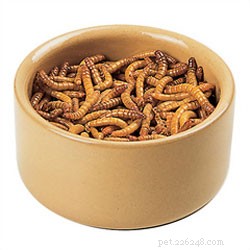 Os geckos leopardo podem sofrer de um problema único que pode surgir se as larvas da farinha não forem fornecidas para eles comerem. Many Leopard geckos are captive bred in large numbers on the continent and they are primarily fed on mealworms. If mealworms are suddenly removed from their diet, they can go through what appears to be a kind of mealworm withdrawal. They may rapidly lose weight and refuse to eat. For this reason we always recommend providing leopard geckos with a bowl of mealworms 3-4 days a week.
Os geckos leopardo podem sofrer de um problema único que pode surgir se as larvas da farinha não forem fornecidas para eles comerem. Many Leopard geckos are captive bred in large numbers on the continent and they are primarily fed on mealworms. If mealworms are suddenly removed from their diet, they can go through what appears to be a kind of mealworm withdrawal. They may rapidly lose weight and refuse to eat. For this reason we always recommend providing leopard geckos with a bowl of mealworms 3-4 days a week. Overfeeding (Food Blindness)
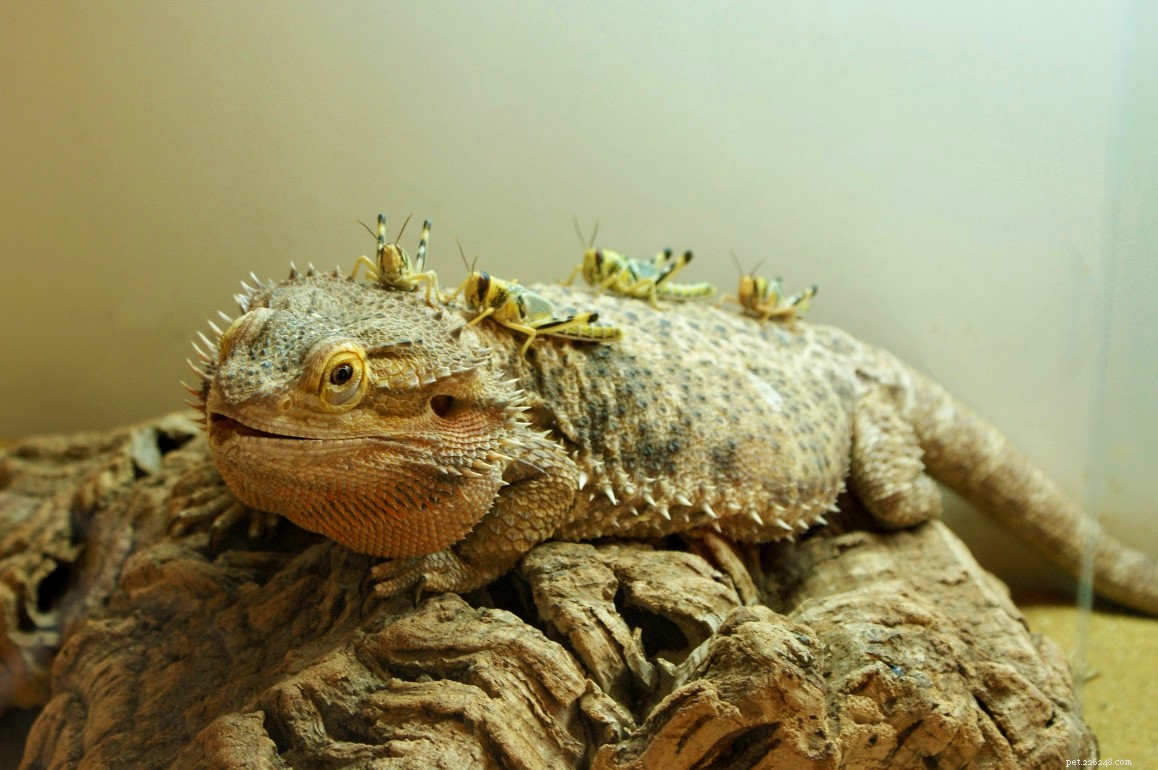 This is separate from the issue of obesity but may be linked. This cause of anorexia is a little unusual and is only relevant to an animal that has previously been eating well. When provided with an over-abundance of food many reptiles (particularly lizards and amphibians) will stop feeding. The specific reasons behind this are unknown but are believed to be due to one of two things:The animal realises that there is an over-abundance of food and therefore feels under no pressure to make any particular effort to eat, as there is no urgency to find food; This lack of urgency if prolonged may eventually start to suppress appetite as the digestive system slows down. OR, the constant movement of food in the enclosure desensitises the animal, which no longer sees the food as prey but instead sees it as simply part of the environment.
This is separate from the issue of obesity but may be linked. This cause of anorexia is a little unusual and is only relevant to an animal that has previously been eating well. When provided with an over-abundance of food many reptiles (particularly lizards and amphibians) will stop feeding. The specific reasons behind this are unknown but are believed to be due to one of two things:The animal realises that there is an over-abundance of food and therefore feels under no pressure to make any particular effort to eat, as there is no urgency to find food; This lack of urgency if prolonged may eventually start to suppress appetite as the digestive system slows down. OR, the constant movement of food in the enclosure desensitises the animal, which no longer sees the food as prey but instead sees it as simply part of the environment. If this is the cause of your animal’s anorexia then it is typically easy to resolve. Simply remove any food from your animal’s environment and leave them without any food for 2-3 days (assuming they are otherwise healthy). After this “fasting” period reintroduce a small amount of food and see if they eat. If not, go through another 3 days of fasting and try again. Chances are that by this point, your animal will be hungry and will jump at the chance to eat any food provided for it. If even after this period of fasting your animal still refuses food, it may be worth considering that there may be another reason for its anorexia.
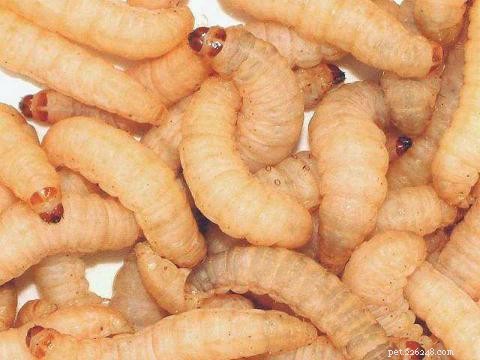 As mentioned in the Feeding Routine section above, it may be helpful to initially try an alternate food source after the fasting period. For example, if your animal has been primarily fed on locust or crickets, try an insect that doesn’t hop around, such as cockroaches, mealworms, wax worms or fruit beetle larvae. With non-jumping insects, like those mentioned above, it is best to provide them for your animal in a bowl, shallow enough for your animal to easily see into, but not so shallow that the food can escape.
As mentioned in the Feeding Routine section above, it may be helpful to initially try an alternate food source after the fasting period. For example, if your animal has been primarily fed on locust or crickets, try an insect that doesn’t hop around, such as cockroaches, mealworms, wax worms or fruit beetle larvae. With non-jumping insects, like those mentioned above, it is best to provide them for your animal in a bowl, shallow enough for your animal to easily see into, but not so shallow that the food can escape. Competition/ Bullying
This issue is only relevant if you have more than one animal in the same enclosure. Housing certain reptiles together can often be achieved relatively risk free if you follow good practices. See our other blog post on housing reptiles together for more info.
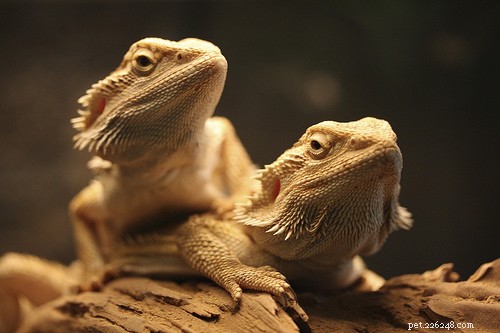 When two animals are housed together, while they may appear to “get along” they will see each other as competition for space and for food. In some circumstances this can result in physical and psychological bullying. Whilst the former is usually pretty obvious, psychological bullying may not be and it can be a cause of anorexia. There will always be one animal more dominant than the other, and the dominant animal may only allow the subordinate animal to feed once it has eaten its fill, or may even pressure the subordinate animal into refusing to eat all together.
When two animals are housed together, while they may appear to “get along” they will see each other as competition for space and for food. In some circumstances this can result in physical and psychological bullying. Whilst the former is usually pretty obvious, psychological bullying may not be and it can be a cause of anorexia. There will always be one animal more dominant than the other, and the dominant animal may only allow the subordinate animal to feed once it has eaten its fill, or may even pressure the subordinate animal into refusing to eat all together. The simplest and most effective way of solving this problem is to separate the animals. Other ways of tackling this problem should only be seen as temporary as they will simply gloss over the problem and mask it – the stress of being housed with an overly dominant animal will still be present and the issue of anorexia may return. That being said separating the animals during feeding is a potential way of managing this issue. It is usually best to remove the dominant animal leaving the non-feeding individual in the enclosure, though if this doesn’t work after several attempts it is worth attempting it the opposite way round.
Seasonal Anorexia
This is most common in male individuals – especially male Royal Pythons. During the breeding season many animals will reduce their appetites and may even stop feeding all together. Male royal pythons have been known to go several months or more without eating during this time. Even though you may not set seasonal temperature and lighting changes in your animal’s enclosure, they may still pick up on these changes from the external environment. Flat-tailed horned lizards (Phrynosoma mcallii ) have been shown to undergo brumation in the autumn regardless of the temperature that they are kept in captivity.
So long as your animal is otherwise fit and healthy and is not losing weight, inappetance during breeding season should not give you cause for concern. However you should make sure there are no other potential causes for the anorexia and keep a close eye on your animal’s physical condition.
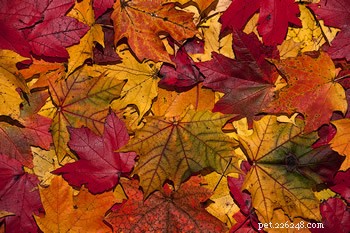 Towards the tail-end of summer and the beginning of autumn, animals may pick up on the shorter days and cooler air temperature outside their tanks. This may cause them to prepare for winter and brumation, during which time their appetites would normally decrease. If your tank is thermostatically controlled and the ambient air temperature inside the tank remains stable, your animal should eventually snap out of it and realise they do not need to go through brumation and feeding should resume. If your tank temperatures are not controlled by a thermostat then you need to find a way of maintaining a suitable stable air temperature such as by changing the wattage of bulb used to heat your enclosure. For lizards, temporarily increasing the amount of time the UVB light is on for by an extra hour may also help them to snap out of preparing for brumation.
Towards the tail-end of summer and the beginning of autumn, animals may pick up on the shorter days and cooler air temperature outside their tanks. This may cause them to prepare for winter and brumation, during which time their appetites would normally decrease. If your tank is thermostatically controlled and the ambient air temperature inside the tank remains stable, your animal should eventually snap out of it and realise they do not need to go through brumation and feeding should resume. If your tank temperatures are not controlled by a thermostat then you need to find a way of maintaining a suitable stable air temperature such as by changing the wattage of bulb used to heat your enclosure. For lizards, temporarily increasing the amount of time the UVB light is on for by an extra hour may also help them to snap out of preparing for brumation. Handling and Over-Handling
One of the first things to change when an animal stops eating is handing. Handling can be a stressful experience for an animal, especially in a new acquisition which may not have settled in properly yet. This is why we always recommend leaving your animal at least 4 weeks before you begin handling, to allow it to settle in and so you can make sure it is feeding well and behaving naturally. If your animal stops eating, simply stop all unnecessary handling and wait until it is back to eating consistently.
Other Issues that May Cause Anorexia
- Dehydration – primarily in newly acquired animals – especially wc!
- A Lack of Necessary Special equipment – e.g. retes stacks (dwarf ackies/ monitors), branches (arboreal lizards and snakes)
- External environmental factors – noise, aerosols
- Humidity
Physiological Causes
Physiological causes are likely to require veterinary advice and treatment to properly resolve them. So if you suspect any of the following to be the cause of anorexia we strongly recommend that you seek out a good veterinarian with reptile experience.
Mites
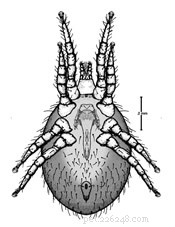 Mites are a reptile keeper’s nightmare. They are extremely resilient, reproduce rapidly and can cause all sorts of problems if they are not dealt with swiftly and effectively. Whilst most common in snakes, mites can affect lizards, particularly lizards with rough scales. Mites are extremely irritating for the affected animal and can often suppress the animal’s desire to eat. The most effective way of eliminating mites is to see a veterinarian and get an injectable treatment – though some species react badly and can’t have this. Additionally, the enclosure should have all of the substrate and décor removed, the substrate should be discarded and replaced with newspaper and décor should be thoroughly cleaned, preferably with boiling water. The enclosure should then be thoroughly cleaned with hot water and a retile safe disinfectant. After a few weeks, once it appears all the mites have been eliminated, substrate and décor can be replaced.
Mites are a reptile keeper’s nightmare. They are extremely resilient, reproduce rapidly and can cause all sorts of problems if they are not dealt with swiftly and effectively. Whilst most common in snakes, mites can affect lizards, particularly lizards with rough scales. Mites are extremely irritating for the affected animal and can often suppress the animal’s desire to eat. The most effective way of eliminating mites is to see a veterinarian and get an injectable treatment – though some species react badly and can’t have this. Additionally, the enclosure should have all of the substrate and décor removed, the substrate should be discarded and replaced with newspaper and décor should be thoroughly cleaned, preferably with boiling water. The enclosure should then be thoroughly cleaned with hot water and a retile safe disinfectant. After a few weeks, once it appears all the mites have been eliminated, substrate and décor can be replaced. Other Parasites
Other parasites can be found in captive bred animals, but are most common in wild caught animals. Other parasites - especially intestinal parasites such as worms, can really have an impact on an animal’s desire to eat. Intestinal parasites can be hard to detect, but you may see evidence in the faeces with the presence of eggs. Occasionally the stomach will bloat due to parasites, but the only way to really check for parasites is to send a faecal sample off for analysis - most vets should be able to offer this.
Compaction
Compaction is a condition where an animal’s gut becomes blocked, either by urates, ingested substrate, faeces or another blockage – resulting in an inability or a limited ability to pass waste. When an animal becomes compacted, their first instinct can be to stop feeding so as not to make the issue worse. Compaction can – but not always be spotted by noticing a bulge at your animal’s rear and/or by repeated and sustained failed attempts at passing waste. Sometimes compaction can be resolved in the early stages by giving your animal a bath in some lukewarm water for around half an hour. If this doesn’t resolve the issue, veterinary treatment should be sought.
Metabolic Bone Disease (MBD)
MBD is the name given to a group of conditions whereby the bone structure of the animal is weakened. For more info specifically regarding MBD, read our MBD article here. MBD can cause the jaw bones to weaken, resulting in a soft jaw which can make feeding difficult and sometimes painful. If you suspect MBD to be the cause of your animal’s anorexia, it is important that you seek veterinary help as soon as possible.
Other Illnesses
If your animal is feeling under the weather due to other illnesses such as respiratory infection, stomatitis or gastroenteritis - this too could cause anorexia. Look for signs and symptoms of these and other possible illnesses to check that a separate illness isn’t causing anorexia.
Words of Warning
Assist/ Force Feeding
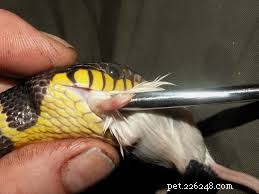 As a general rule, we never attempt to assist feed or force feed any animal, and we recommend that you do not attempt it either. 90% of the time, an anorexic animal can be persuaded to feed without the need for assist/ force feeding and oftentimes, attempting this can cause more harm than good – especially if you do not have extensive experience in performing it. Assist/ force feeding is a very stressful process for the animal and the stress can be just as detrimental to the animal as the anorexia itself. This stress can have a negative impact on the effectiveness of the animal’s digestive processes and will reduce the benefit of any meal received and increases the likelihood of regurgitation. It may also result in the animal never fully regaining its feeding response.
As a general rule, we never attempt to assist feed or force feed any animal, and we recommend that you do not attempt it either. 90% of the time, an anorexic animal can be persuaded to feed without the need for assist/ force feeding and oftentimes, attempting this can cause more harm than good – especially if you do not have extensive experience in performing it. Assist/ force feeding is a very stressful process for the animal and the stress can be just as detrimental to the animal as the anorexia itself. This stress can have a negative impact on the effectiveness of the animal’s digestive processes and will reduce the benefit of any meal received and increases the likelihood of regurgitation. It may also result in the animal never fully regaining its feeding response. There may be unusual and rare situations where force feeding is the only/ best option. If you think your animal may be in this position, please give us a call or speak to a reputable reptile vet or pet shop for advice.
Feeding Chick/ Hamster
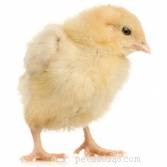 In some circumstances, as mentioned in a previous section, changing the food source can help an animal regain its feeding response. With particular regard to snakes, switching from rodents to chick or hamster can work well. We’ve found Burmese pythons are particularly keen to feed on chick. However, both chick and hamster can be somewhat addictive and should be avoided if possible.
In some circumstances, as mentioned in a previous section, changing the food source can help an animal regain its feeding response. With particular regard to snakes, switching from rodents to chick or hamster can work well. We’ve found Burmese pythons are particularly keen to feed on chick. However, both chick and hamster can be somewhat addictive and should be avoided if possible. Nutritionally chicks are a poor food source long term for snakes and hamsters can be hard to get a hold of and are also much more expensive than the equivalent rat. A better option can be to use a chick to scent a mouse or rat to tempt a snake into eating. Combining this scenting technique, with periods of fasting before attempting unscented food can work very well in encouraging a non-feeding snake into eating its normal food source again.
Non-Vet Treatment
Powerade
The benefits of the use of Powerade are mostly anecdotal but its use is often recommended on forums and other places online. Powerade is used to help treat anorexia by preparing a 50:50 solution with lukewarm water and bathing your animal in the solution for around 30mins. With a bit of luck your animal will have a drink of the diluted Powerade, which is full of electrolytes and sugars which can help to boost an animal’s digestive system and increase its appetite.
Gut flora enhancers
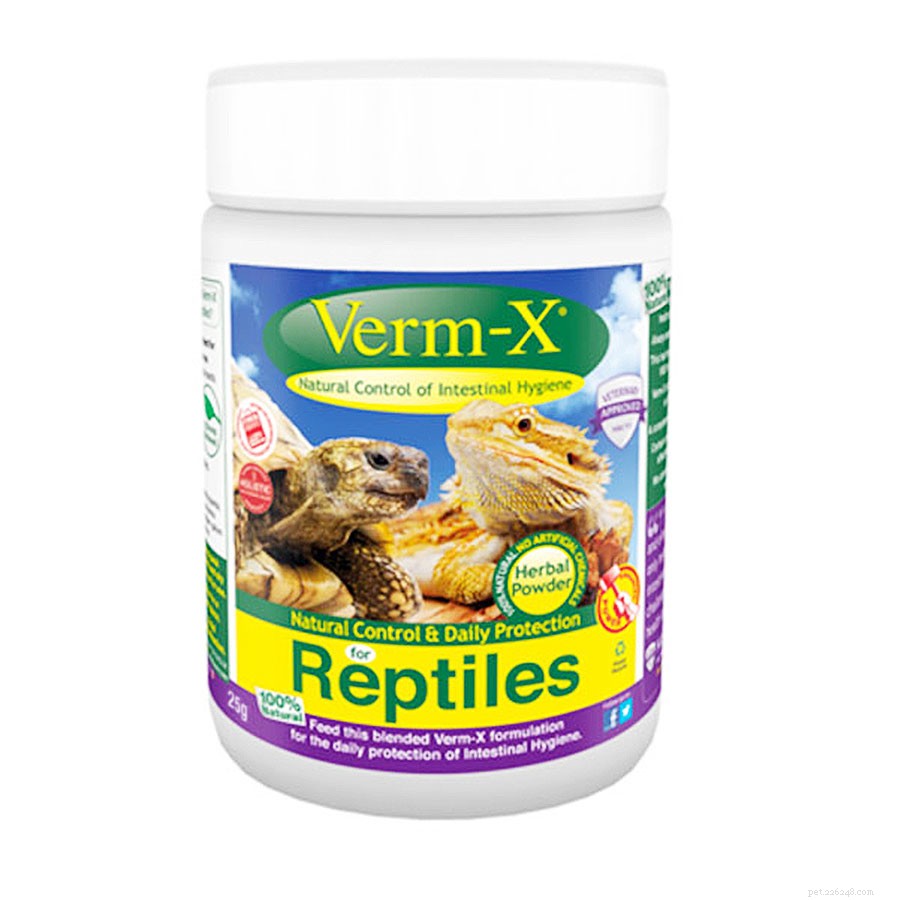 If you have an animal that has recently regurgitated - whether or not it is otherwise feeding well, it is worth thinking about purchasing one of the several supplements available that help boost the good gut flora which help your animal digest food (such as Verm-X). After an animal regurgitates, a large amount of their gut flora are also removed which makes digesting food harder. The gut flora will gradually recover on their own, but these supplements can help promote their recovery. The supplements are usually in powder form and can be dusted onto rodents or insects. Just remember to reduce the size of the meal you provide for a period, until your animal has gone several weeks without regurgitation.
If you have an animal that has recently regurgitated - whether or not it is otherwise feeding well, it is worth thinking about purchasing one of the several supplements available that help boost the good gut flora which help your animal digest food (such as Verm-X). After an animal regurgitates, a large amount of their gut flora are also removed which makes digesting food harder. The gut flora will gradually recover on their own, but these supplements can help promote their recovery. The supplements are usually in powder form and can be dusted onto rodents or insects. Just remember to reduce the size of the meal you provide for a period, until your animal has gone several weeks without regurgitation.This is by no means a comprehensive article on Anorexia and if you are unsure about any of the above and your animal isn’t feeding properly feel free to give us a call or pop in and see us at the Southbourne store and we’d be happy to talk through things with you and help you get your animal feeding well again.
- Anorexia do gato:causas, sintomas e tratamento
- Tosse canina:tipos de tosse canina e causas
- Doença gengival em gatos:causas, sintomas e prevenção
- Acumulação de animais de estimação:o que é e o que causa?
- Paralisia em gatos:causas e tratamentos
- Caspa canina:6 causas, prevenção e tratamento diferentes
- Meu cachorro come seu próprio cocô:causas e soluções

